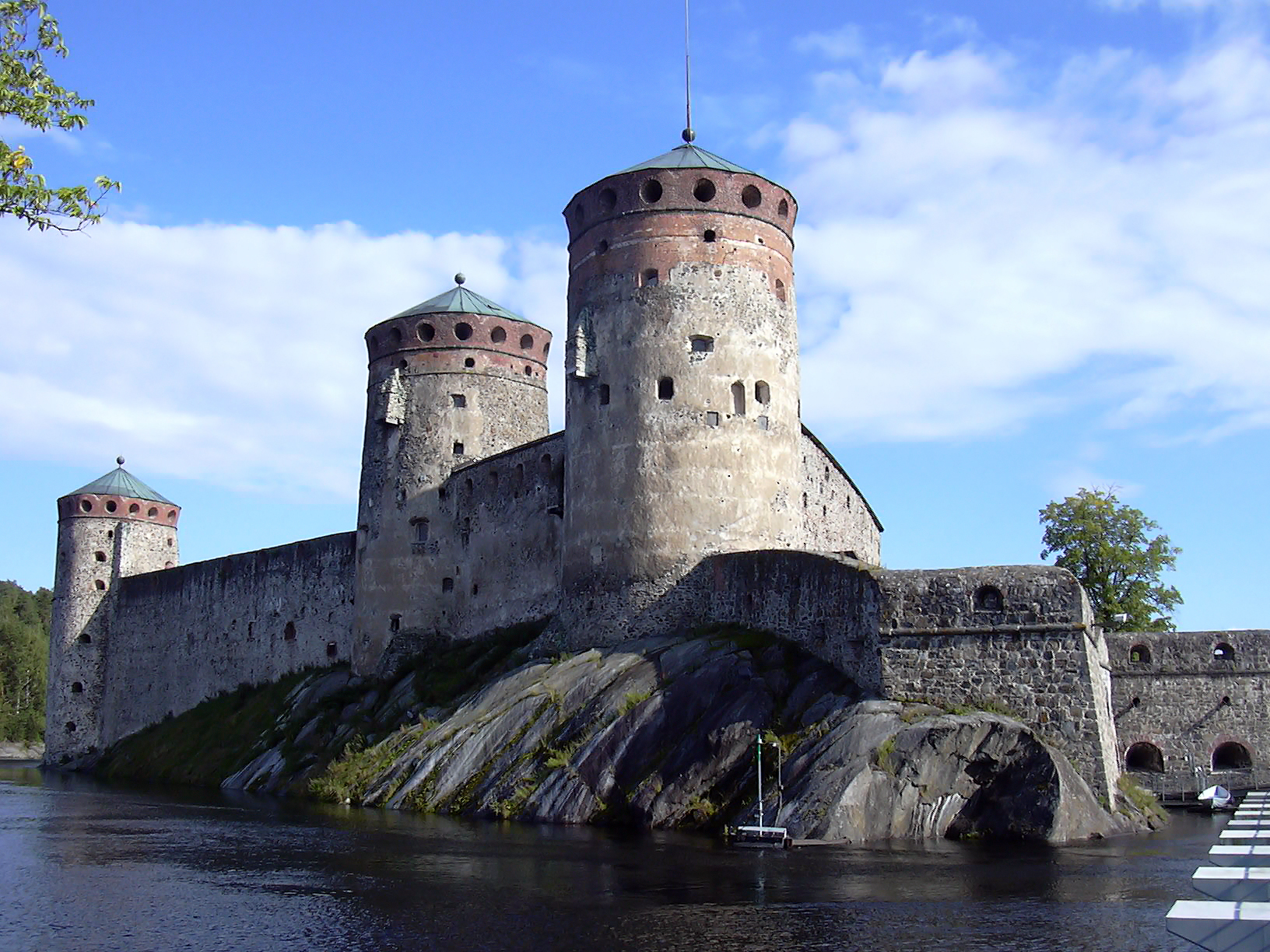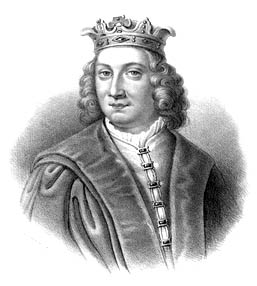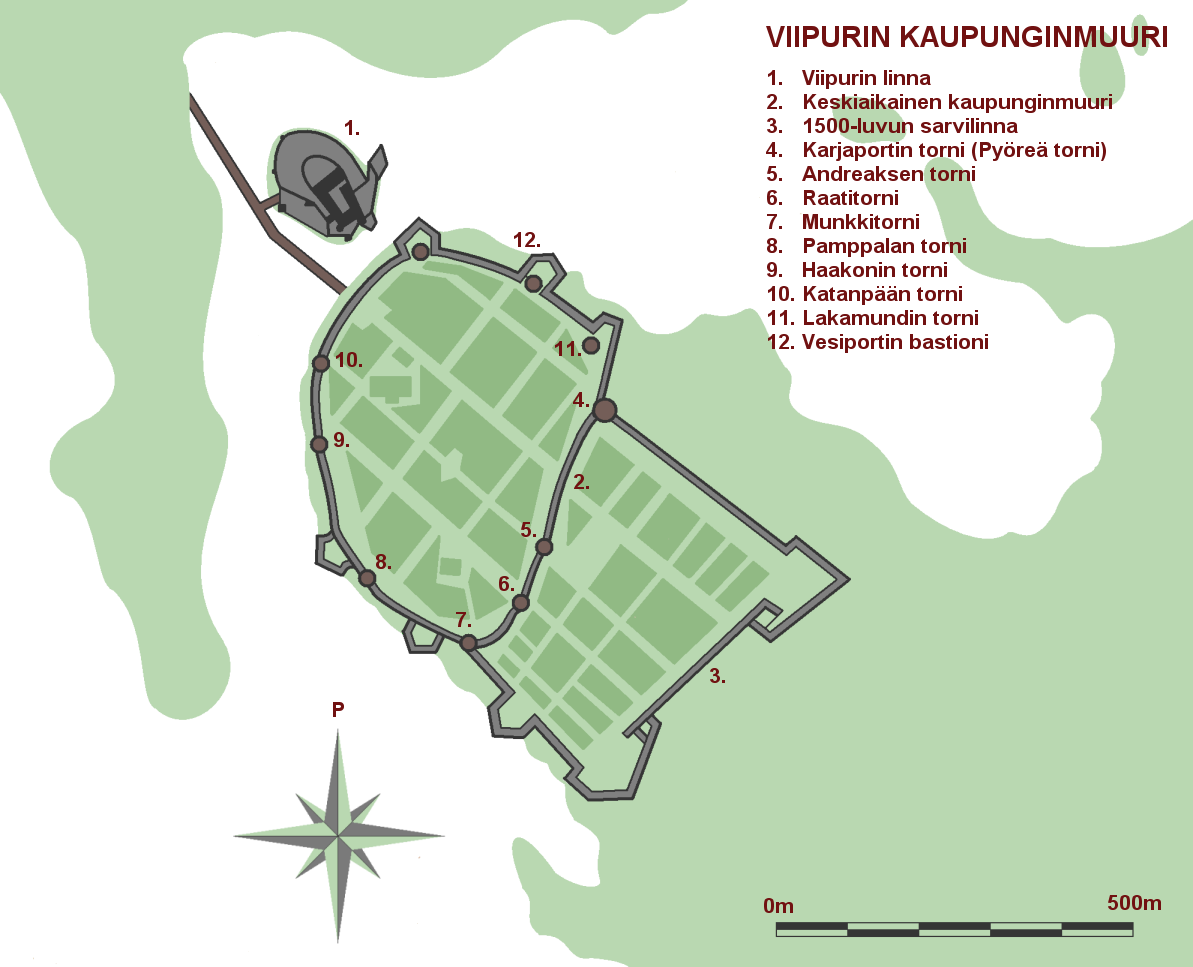|
Erik Axelsson Tott (regent Of Sweden)
Erik Axelsson (Tott) (c. 1419–1481) was a Dano-Swedish statesman and regent of Sweden under the Kalmar Union, jointly with Jöns Bengtsson Oxenstierna in 1457 and alone from 1466 to 1467. Biography He was born in Scania during the reign of King Eric of Pomerania, as the son of Axel Pedersen Thott, lord of Herlev and Lilloe, and his second wife Ingeborg Ivarsdotter. Entered the service of his mother's first cousin, King Charles VIII of Sweden (c. 1408–1470), at an early age when Charles was Lord High Constable and Castellan. Erik Axelsson was the "Swedish anchor" of his family, of whom most regarded themselves as Danish subjects. His father's first wife was from Scania, a region then integral to the (Danish) kingdom. In two generations during the latter half of the 15th century, the nine Tott brothers (''Axelssöner''), held high and mighty positions just when Denmark and Sweden were struggling to shape the Kalmar Union, however trying to preserve their own family's pos ... [...More Info...] [...Related Items...] OR: [Wikipedia] [Google] [Baidu] |
List Of Swedish Monarchs
This is a list of Swedish kings, queens, regents and viceroys of the Kalmar Union. History The earliest record of what is generally considered to be a Swedish king appears in Tacitus' work '' Germania'', c. 100 AD (the king of the Suiones). However, due to scant and unreliable sources before the 11th century, lists of succession traditionally start in the 10th century with king Olof Skötkonung, and his father Eric the Victorious, who also were the first Swedish kings to be baptized. There are, however, lists of Swedish pagan monarchs with far older dates, but in many cases these kings appear in sources of disputed historical reliability. These records notably deal with the legendary House of Yngling, and based on the Danish chronicler Saxo Grammaticus, Eric the Victorious and Olof Skötkonung have often been classified as belonging to the Swedish house of Ynglings, tracing them back to Sigurd Hring and Ragnar Lodbrok (whom Saxo considered to belong to the House of Yngling). Ho ... [...More Info...] [...Related Items...] OR: [Wikipedia] [Google] [Baidu] |
Gotland
Gotland (, ; ''Gutland'' in Gutnish), also historically spelled Gottland or Gothland (), is Sweden's largest island. It is also a province, county, municipality, and diocese. The province includes the islands of Fårö and Gotska Sandön to the north, as well as the Karlsö Islands ( Lilla and Stora) to the west. The population is 61,001, of which about 23,600 live in Visby, the main town. Outside Visby, there are minor settlements and a mainly rural population. The island of Gotland and the other areas of the province of Gotland make up less than one percent of Sweden's total land area. The county formed by the archipelago is the second smallest by area and is the least populated in Sweden. In spite of the small size due to its narrow width, the driving distance between the furthermost points of the populated islands is about . Gotland is a fully integrated part of Sweden with no particular autonomy, unlike several other offshore island groups in Europe. Historically there was ... [...More Info...] [...Related Items...] OR: [Wikipedia] [Google] [Baidu] |
15th-century Swedish People
The 15th century was the century which spans the Julian dates from 1 January 1401 ( MCDI) to 31 December 1500 ( MD). In Europe, the 15th century includes parts of the Late Middle Ages, the Early Renaissance, and the early modern period. Many technological, social and cultural developments of the 15th century can in retrospect be seen as heralding the "European miracle" of the following centuries. The architectural perspective, and the modern fields which are known today as banking and accounting were founded in Italy. The Hundred Years' War ended with a decisive French victory over the English in the Battle of Castillon. Financial troubles in England following the conflict resulted in the Wars of the Roses, a series of dynastic wars for the throne of England. The conflicts ended with the defeat of Richard III by Henry VII at the Battle of Bosworth Field, establishing the Tudor dynasty in the later part of the century. Constantinople, known as the capital of the world an ... [...More Info...] [...Related Items...] OR: [Wikipedia] [Google] [Baidu] |
People From Scania
A person ( : people) is a being that has certain capacities or attributes such as reason, morality, consciousness or self-consciousness, and being a part of a culturally established form of social relations such as kinship, ownership of property, or legal responsibility. The defining features of personhood and, consequently, what makes a person count as a person, differ widely among cultures and contexts. In addition to the question of personhood, of what makes a being count as a person to begin with, there are further questions about personal identity and self: both about what makes any particular person that particular person instead of another, and about what makes a person at one time the same person as they were or will be at another time despite any intervening changes. The plural form "people" is often used to refer to an entire nation or ethnic group (as in "a people"), and this was the original meaning of the word; it subsequently acquired its use as a plural form of ... [...More Info...] [...Related Items...] OR: [Wikipedia] [Google] [Baidu] |
1481 Deaths
Year 1481 ( MCDLXXXI) was a common year starting on Monday (link will display the full calendar) of the Julian calendar). Events January–December * May 3 ** The 1481 Rhodes earthquake, the largest of a series, strikes the island of Rhodes, causing an estimated 30,000 casualties. ** Mehmed II, Sultan of the Ottoman Empire, dies and is succeeded by his son, Bayezid II. * May 21 – Christian I, King of Denmark and Norway, dies and is succeeded by his son John (1481–1513). * June 21 – The papal bull ''Aeterni Regis'' grants all land south of the Canary Islands to Portugal. * July 24 – Fire destroys the roof and the spires of Reims Cathedral. * August 29 – John II of Portugal starts to rule in his own right. * September 10 – Alphonso II of Naples recaptures the city of Otranto. * December 10 – With the death of Duke Charles IV of Anjou, Anjou reverts to the French crown under Louis XI of France. * December 26 – Battle of Wes ... [...More Info...] [...Related Items...] OR: [Wikipedia] [Google] [Baidu] |
Regents Of Sweden
A regent (from Latin : ruling, governing) is a person appointed to govern a state '' pro tempore'' (Latin: 'for the time being') because the monarch is a minor, absent, incapacitated or unable to discharge the powers and duties of the monarchy, or the throne is vacant and the new monarch has not yet been determined. One variation is in the Monarchy of Liechtenstein, where a competent monarch may choose to assign regency to their of-age heir, handing over the majority of their responsibilities to prepare the heir for future succession. The rule of a regent or regents is called a regency. A regent or regency council may be formed ''ad hoc'' or in accordance with a constitutional rule. ''Regent'' is sometimes a formal title granted to a monarch's most trusted advisor or personal assistant. If the regent is holding their position due to their position in the line of succession, the compound term ''prince regent'' is often used; if the regent of a minor is their mother, she would be ... [...More Info...] [...Related Items...] OR: [Wikipedia] [Google] [Baidu] |
Rulers Of Finland
This is a list of monarchs and heads of state of Finland; that is, the kings of Sweden with regents and viceroys of the Kalmar Union, the grand dukes of Finland, a title used by most Swedish monarchs, up to the two-year regency following the independence in 1917, with a brief flirtation with a truly domestic monarchy. Part of the Kingdom of Sweden, from the High Middle Ages until 1809 ''Finland as an integral part of Sweden under the King of Sweden (Ruotsin kuningas).'' Some texts suggest the Swedish rule of Finland started as early as during the Houses of Sverker and Eric (Sverker I of Sweden 1130–1156 and Eric the Saint 1156–1160). But the first historic documents suggesting rule by Swedish kings in Finland not limited to sparse crusades and conquests are dated at around 1249. The House of Bjelbo *1250–1275 : Valdemar I (''Valdemar Birgerinpoika'') **regent: Birger Jarl *1275–1284 : Magnus I (''Maunu I Ladonlukko'') *1284–1291 : Benedict I (''Bengt Birgerinpoi ... [...More Info...] [...Related Items...] OR: [Wikipedia] [Google] [Baidu] |
People Of Medieval Finland
A person ( : people) is a being that has certain capacities or attributes such as reason, morality, consciousness or self-consciousness, and being a part of a culturally established form of social relations such as kinship, ownership of property, or legal responsibility. The defining features of personhood and, consequently, what makes a person count as a person, differ widely among cultures and contexts. In addition to the question of personhood, of what makes a being count as a person to begin with, there are further questions about personal identity and self: both about what makes any particular person that particular person instead of another, and about what makes a person at one time the same person as they were or will be at another time despite any intervening changes. The plural form "people" is often used to refer to an entire nation or ethnic group (as in "a people"), and this was the original meaning of the word; it subsequently acquired its use as a plural form of ... [...More Info...] [...Related Items...] OR: [Wikipedia] [Google] [Baidu] |
Vyborg Town Wall
The Vyborg town wall (russian: Выборгская городская стена, fi, Viipurin kaupunginmuuri, sv, Viborgs stadsmur) was a defensive structure built around the town of Viborg (today Vyborg, Russia). It was completed during the Swedish era in the 1470s and demolished mainly in the 1860s as Vyborg was a part of the Grand Duchy of Finland. Some minor parts of the wall are still preserved as well as two round towers. History and construction The foundations of the Viborg town wall were laid by Erik Axelsson Tott, the stadtholder of Viborg Castle. It was constructed by the same builders who completed the St. Olaf's Castle in 1475–1477. They were most likely invited from Tallinn. The wall was 5–6 meters high and had originally 10 towers with a combination of circular and square designs. Two of them, the Town Hall Tower and the Round Tower, built in 1540s, are still preserved. In the late 16th century the wall was strengthened with several bastions and the so ... [...More Info...] [...Related Items...] OR: [Wikipedia] [Google] [Baidu] |
Savonlinna
Savonlinna (, , ; sv, Nyslott, lit=New Castle) is a town and a municipality of inhabitants in the southeast of Finland, in the heart of the Saimaa lake region, which is why the city is also nicknamed the "Capital of Saimaa". Together with Mikkeli, it is one of the largest towns in the South Savonia region and one of the concentrations in the region's hospital districts. The town is internationally known for its medieval St. Olaf's Castle and the annual Savonlinna Opera Festival. Its surrounding the enclaved municipality of Enonkoski. History The city was founded in 1639, based on Olavinlinna castle (''St. Olaf's Castle''). The castle was founded by Erik Axelsson Tott in 1475 in an effort to protect Savonia and to control the unstable border between the Kingdom of Sweden and its Russian adversary. During the Russo-Swedish War (1741–1743), the castle was captured by Field-Marshal Peter Lacy. It was held by Russia between 1743 and 1812, when it was granted back to Finland as ... [...More Info...] [...Related Items...] OR: [Wikipedia] [Google] [Baidu] |
Olavinlinna
Olavinlinna (also known as St. Olaf's Castle; sv, Olofsborg; german: Olafsburg; literally ''Olof's Castle'') is a 15th-century three-tower castle located in Savonlinna, Finland. It is built on an island in the Kyrönsalmi strait that connects the lakes Haukivesi and Pihlajavesi. It is the northernmost medieval stone fortress still standing. The castle forms a spectacular stage for the Savonlinna Opera Festival, held for the first time in the summer 1912. History The fortress was founded by Erik Axelsson Tott in 1475 under the name ''Sankt Olofsborg'' in an effort to profit from the political turmoil following Ivan III's conquest of the Novgorod Republic. It was sited in Savonia so as to lay claim to the Russian side of the border established by the Treaty of Nöteborg. One of Tott's letters from 1477 includes a passing mention of foreign builders invited to Olofsborg, probably from Reval, where the city fortifications were being extended. It was the first Swedish castle pr ... [...More Info...] [...Related Items...] OR: [Wikipedia] [Google] [Baidu] |
Finland
Finland ( fi, Suomi ; sv, Finland ), officially the Republic of Finland (; ), is a Nordic country in Northern Europe. It shares land borders with Sweden to the northwest, Norway to the north, and Russia to the east, with the Gulf of Bothnia to the west and the Gulf of Finland across Estonia to the south. Finland covers an area of with a population of 5.5 million. Helsinki is the capital and largest city, forming a larger metropolitan area with the neighbouring cities of Espoo, Kauniainen, and Vantaa. The vast majority of the population are ethnic Finns; Finnish, alongside Swedish, are the official languages. Finland's climate varies from humid continental in the south to the boreal in the north. The land cover is primarily a boreal forest biome, with more than 180,000 recorded lakes. Finland was first inhabited around 9000 BC after the Last glacial period. The Stone Age introduced several different ceramic styles and cultures. The Bronze Age and Iron Age were charac ... [...More Info...] [...Related Items...] OR: [Wikipedia] [Google] [Baidu] |




_1938.jpg)




